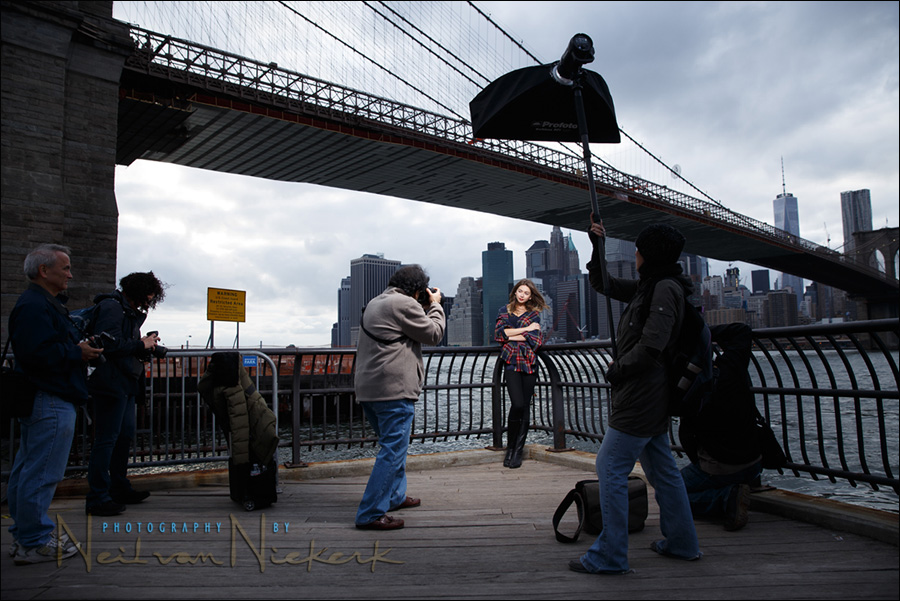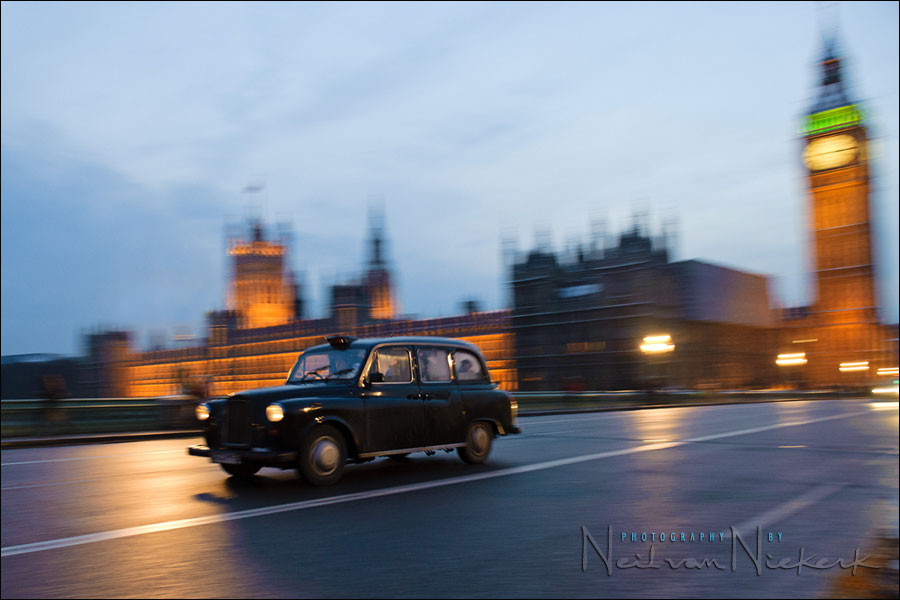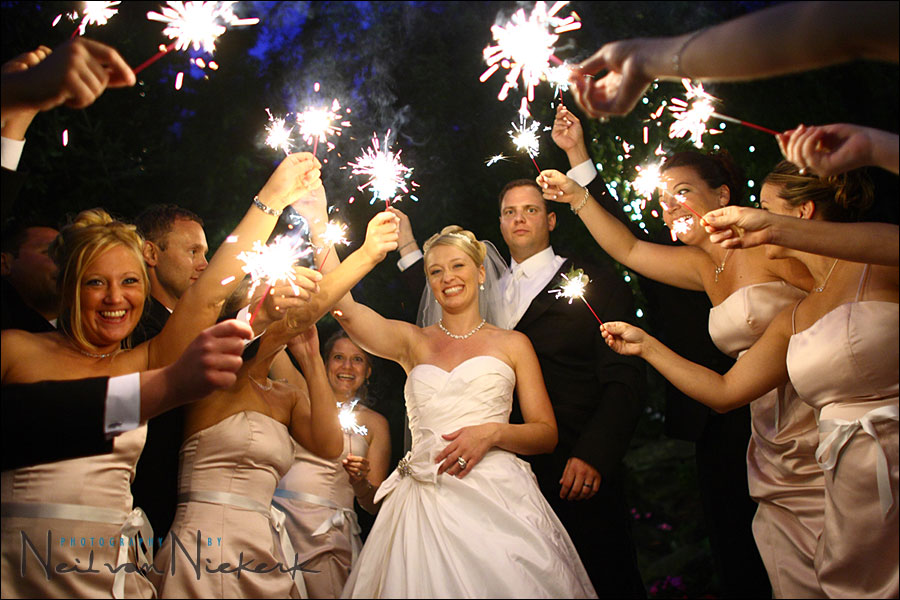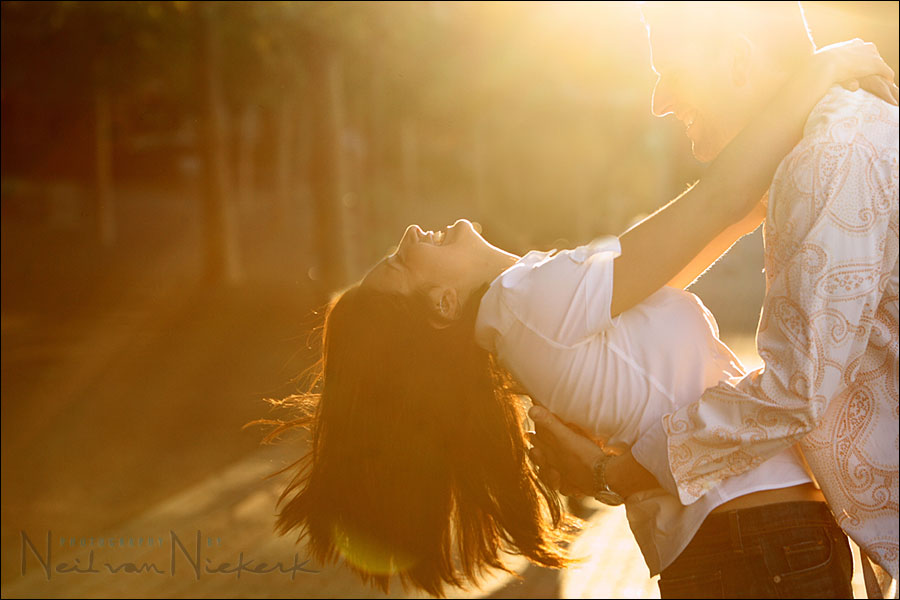flash photography: dealing with reflective surfaces
dealing with reflective surfaces when using flash
Rooms with wooden paneling are notoriously difficult to shoot in when using flash. This is because of the tendency for the light source (flash) to create large hot spots on the wooden surfaces. I've had someone ask me specifically about these images from a recent wedding, and how I avoided those specular reflections in the wooden paneling. The best way to avoid them is to make sure you don't "see" your light-source / flash-tube in the wood paneling. Imagine the flat surface to be a mirror - and then from your angle of view Read more inside...a little less gray ..
I love color. I see in color. I really favor color over B&W images. But strong B&W images do have impact that is often lost with the distraction of color. Even though most of the photographs on my wedding photography blog are in color, there was a recent wedding which I showed as a set of B&W images instead. What happened was that when I started editing the images from that wedding for the blog, first one image, and then another, looked really good as a warm-toned B&W … and then I decided to go all the way and create a blog entry that consisted only of B&W Read more inside...
Flash exposure is controlled by aperture – but only for manual flash
Flash exposure is controlled by aperture ... but only for manual flash
Quite often the short-hand descriptions of the fundamentals of flash photography become misleading 'facts'. I frequently see the following statements repeated on the various photography forums and in questions that are emailed to me: flash is controlled by aperture shutter speed controls ambient light. (This is sometimes twisted around to a completely misleading version: ambient light is only controlled by the shutter speed.) Even though these descriptions are half-right, they are also half-wrong Read more inside...Faster shutter speeds for sharper photos
Using faster shutter speeds for sharper photos
If your images are too soft, chances are it is because your chosen shutter speeds are too slow. A frequent complaint I see on the photography forums, is where the photographer say they used a shutter speed of 1/60th but still have blurry images. Somewhere along the way the urban legend seem to have arisen where 1/60th is that magic shutter speed where we will be assured of sharp images. But of course things are a little more complex than that. There is a rule of thumb which has it that the inverse of your focal length should give Read more inside...photographing sparklers
photographing sparklers
I've had a few people ask me about this image which I posted as the opening image of a slideshow of a recent wedding I photographed. The question was how I lit this, and if I had used flash. The answer is perhaps a very reassuring one .. I only used the light from the sparklers, and no flash was used. What helped here was that there were numerous sparklers, giving a fairly even light over the bridal party. The light from the sparklers is very short-lived, so you have to be all set to grab as many frames as you can when this opportunity arises. With Read more inside...review: RadioPoppers P1
[ click on the photo to see a larger image] Apathy Angel against the backdrop of the Manhattan skyline. The settings for the image above was 1/2000 @ f1.6 @ 100 ISO, and the reason for the wide aperture was that I wanted to have the skyline appear as that dreamlike haze in the background. The bright light though, forced a very fast shutter speed. In this case 1/2000th would let the background over-expose a little and blow out somewhat, but give me some detail. But to control the lighting on my model more specifically than just the available light, I used flash. For the lighting Read more inside...
from the hip …
Here is a simple technique which some of you might already know of - shooting from the hip without looking through the viewfinder. At weddings, when photographing the party and dancing during the reception with a wide-angle lens, I often don't hold the camera up to my eye. Instead I rely on the infra-red beam from the speedlight to show me what the camera is focusing on. Then, using the focus-lock-and-hold method, I keep focus and reframe the shot if needed. This way I can shoot from the hip without looking through the viewfinder, but still have images that are well composed. Here are Read more inside...
broken Canon 580EX II hotshoe foot
One of the most visited pages on this website is the instructional post on how to repair the foot of the Canon 580EX speedlite. Since the foot of the original 580EX is made from plastic, it is easy to break ... but also easy to repair. I broke the foot off my 580EX II some time back, by lowering my camera too fast to the ground by the strap. The camera and lens tilted over, and the flash smacked the ground a touch harder than the gentle soft landing I anticipated. Because the foot of the 580EX II is now made of metal, there is nothing to give, except the body of the speedlight. And this Read more inside...
Using lens flare for that golden glow
Using lens flare for that golden glow effect
I've had some questions about images that I have posted which show a lot of lens flare, and specifically the image above. And the question also arose what kind of Photoshop actions or effects I used on that image. The answer is simple .. none. While that image isn't quite "straight out of the camera", it is (nearly) "straight out of the raw converter". Something I find myself doing quite often on days when I photograph in the sun, is to seek out the sun purposely in the frame of my camera .. and allow the sunlight to flare as a burst Read more inside...- « Previous Page
- 1
- …
- 96
- 97
- 98
- 99
- 100
- …
- 103
- Next Page »








